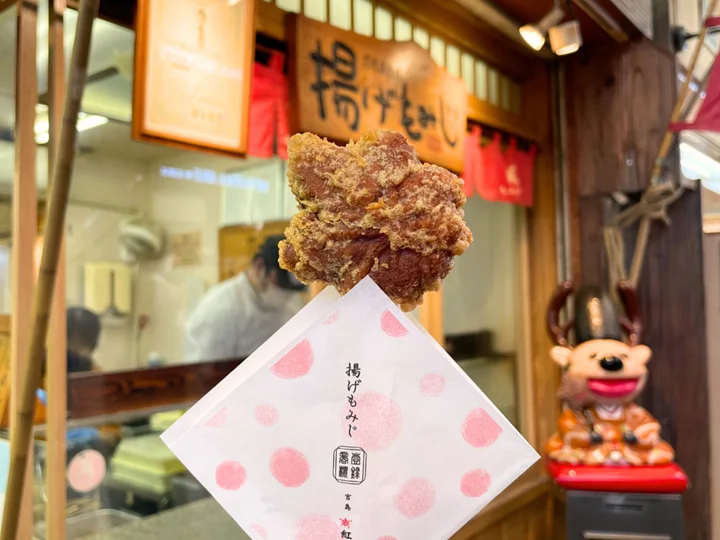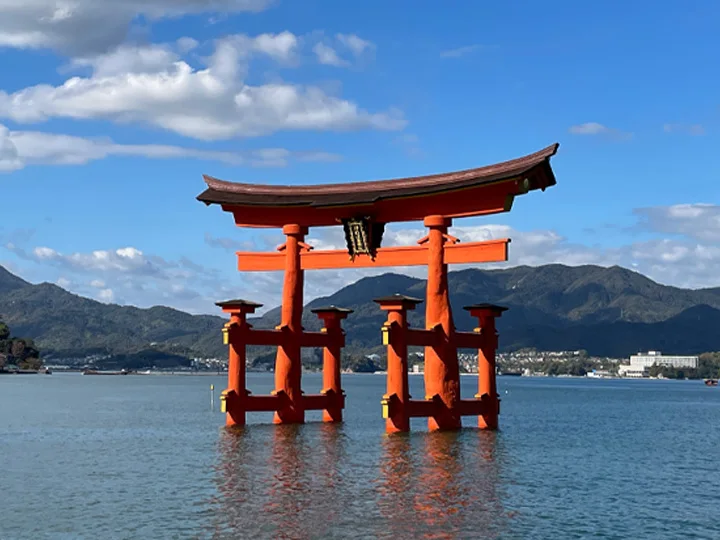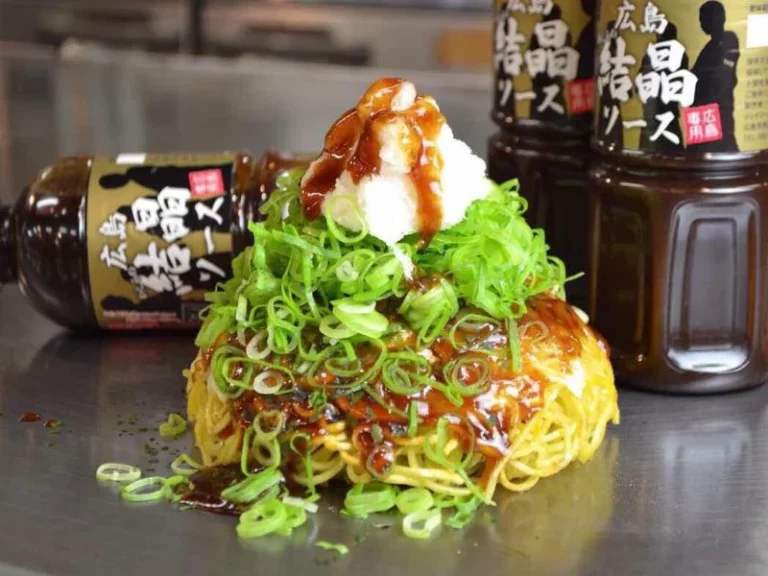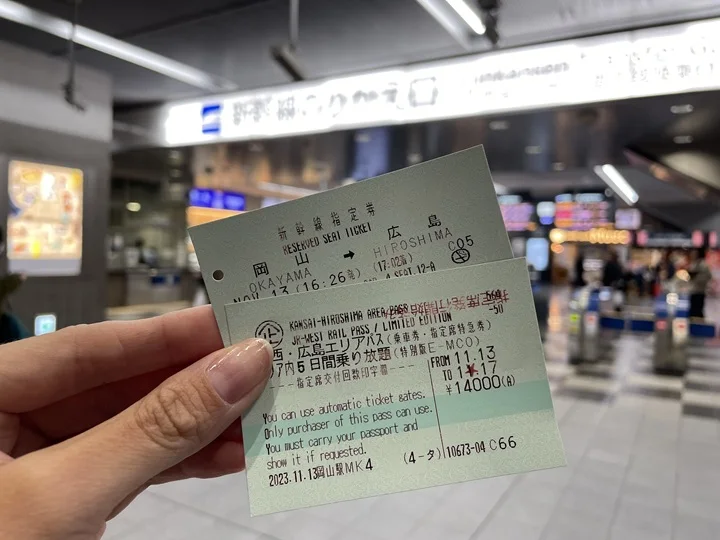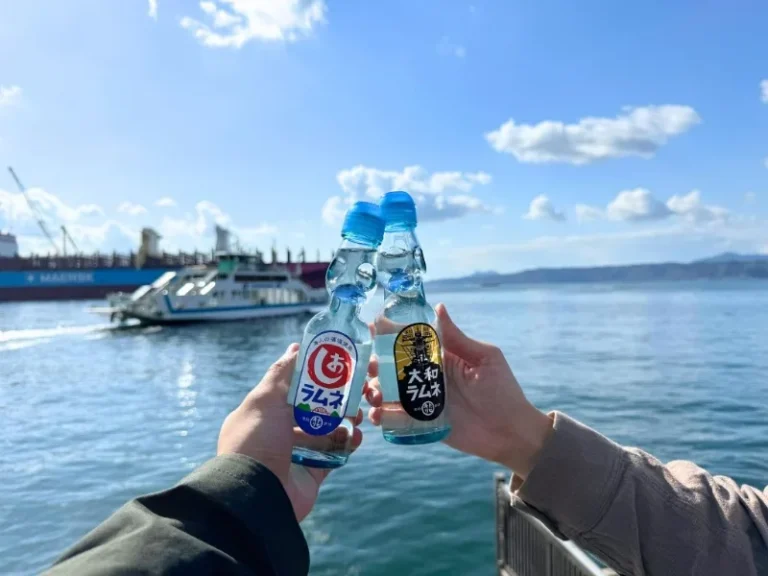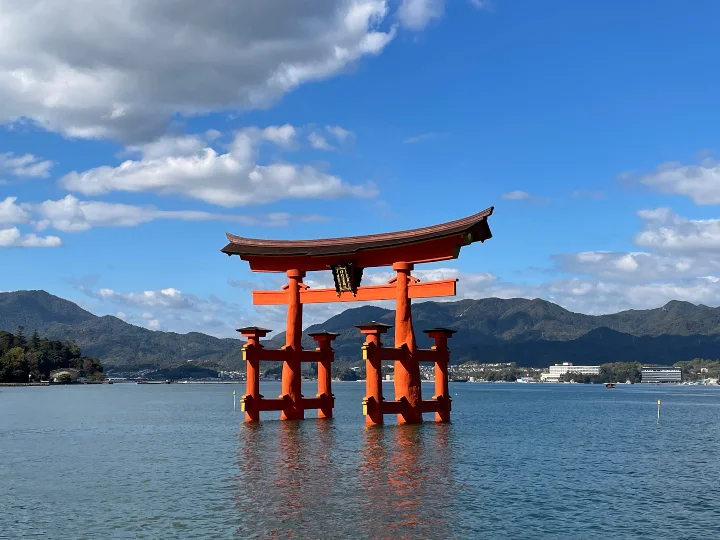Speaking of Hiroshima, the Hiroshima Peace Memorial and the iconic Great Torii at Itsukushima Shrine probably come to mind first, right? Both are truly classic, but there are also many hidden attractions worth visiting! This article provides a comprehensive guide for independent travel, including transportation access, accommodation, must-visit attractions, and unique events for a memorable trip. After reading this guide, you can fully enjoy the city’s unique charm with an easy-to-follow itinerary.

Planning a Trip to Hiroshima? First, Find Out Where It Is!
Hiroshima is located in the southwestern part of Japan’s Honshu island and is one of the major cities in the Chugoku region, with a warm and pleasant climate. The city combines historical significance with natural beauty, and while it is widely known for the 1945 atomic bombing, it has since become a global symbol of peace. Beyond the Atomic Bomb Dome and Itsukushima Shrine, Hiroshima boasts rich cultural heritage and stunning scenery. Local specialties such as Hiroshima oysters, momiji manju (maple leaf-shaped cakes), and the popular Hiroshima-style okonomiyaki are just a few of the reasons travelers are drawn to the city!
Regarding transportation, we will introduce four convenient travel passes for visitors. You can choose the one that best suits your upcoming trip!
JR Rail Pass| Hiroshima & Yamaguchi Region
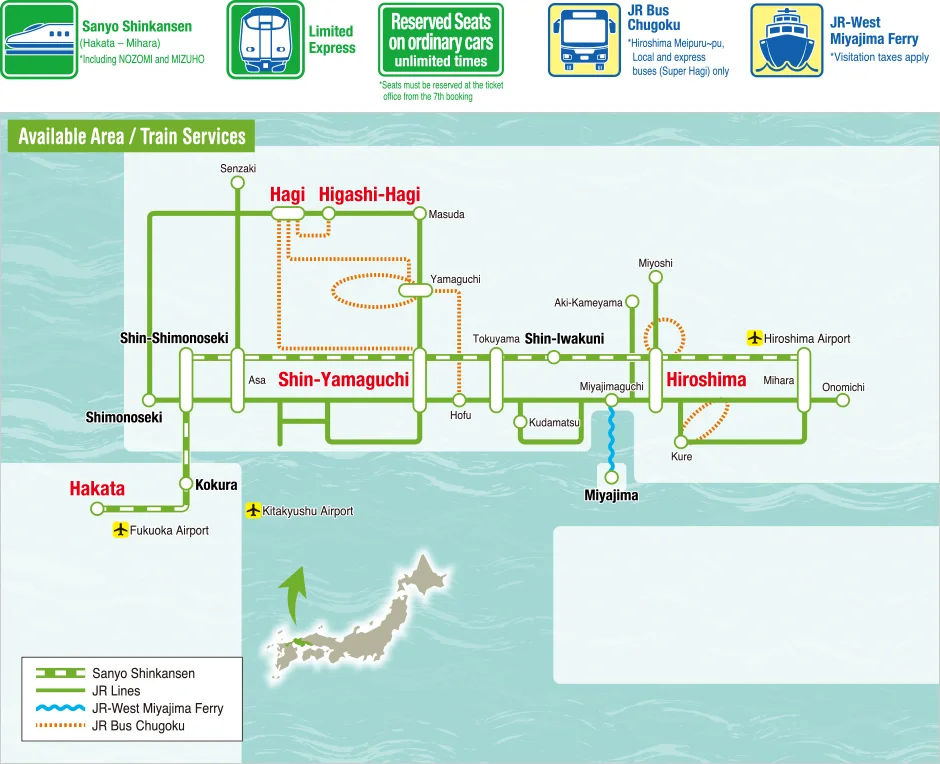
Image Source:WEST JAPAN RAILWAY COMPANY
The JR Hiroshima & Yamaguchi Area Rail Pass includes the Sanyo Shinkansen, allowing travelers to reach Hiroshima directly from Kansai cities such as Osaka and Kyoto, or travel from Hiroshima toward Fukuoka. The pass also covers the JR West Miyajima Ferry, which is the essential transportation to visit Itsukushima Shrine on Miyajima Island!
JR Rail Pass| Okayama, Hiroshima & Yamaguchi Region

Image Source:WEST JAPAN RAILWAY COMPANY
In addition to the Hiroshima & Yamaguchi Area Pass, the Okayama, Hiroshima & Yamaguchi Area Pass is also highly recommended! Both passes allow unlimited rides within the validity period, making it easy to explore Hiroshima and Yamaguchi. You can use them on the Sanyo Shinkansen, limited express trains, and local lines. If you also plan to visit Okayama or Takamatsu, the pass that includes Okayama is the perfect choice!
JR Rail Pass| Kansai & Hiroshima Region
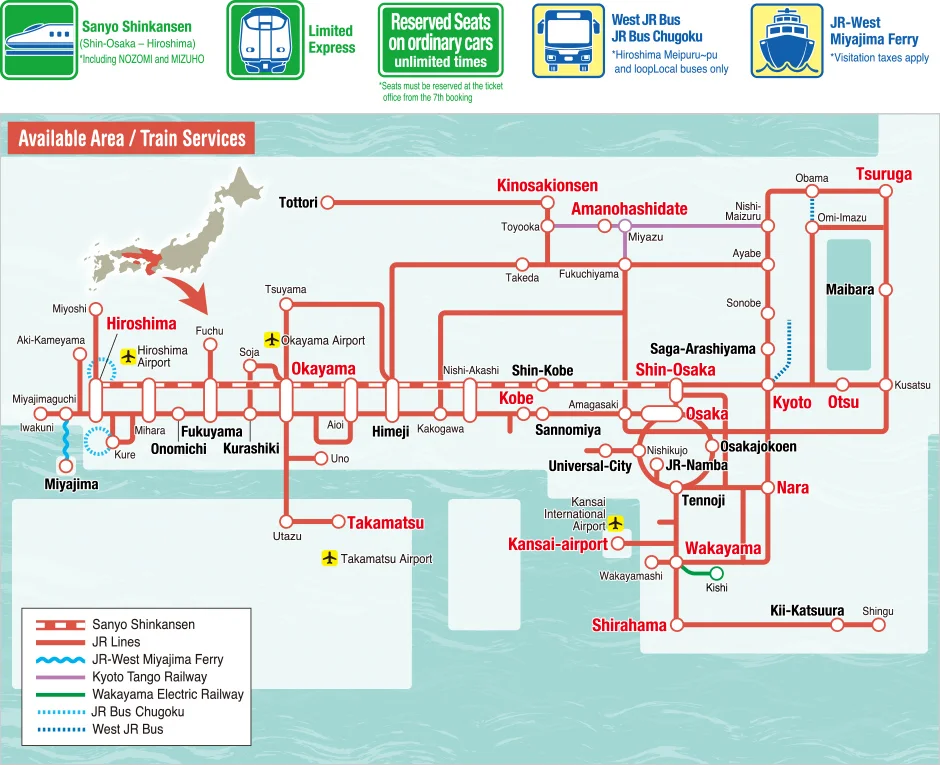
Image Source:WEST JAPAN RAILWAY COMPANY
If you want to explore even more of Hiroshima, consider the JR Kansai & Hiroshima Area Rail Pass! Like the other two passes mentioned above, it allows unlimited rides within the validity period. The difference is that this pass also covers destinations such as Kyoto, Osaka, Kobe, Wakayama, and Takamatsu, making it highly recommended for travelers planning to visit these areas.
As a helpful reminder, all three JR Area Passes include the JR West Miyajima Ferry at no extra cost, so you don’t need to purchase a separate ticket to visit Itsukushima Shrine!
Have Fun in Hiroshoma Pass
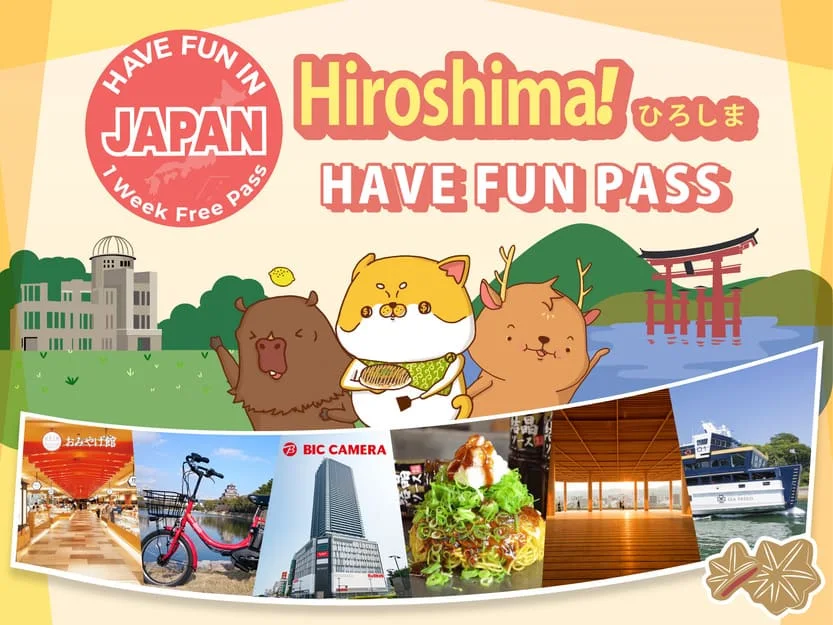
Besides the three types of passes we mentioned above, ‘Have Fun in Hiroshima Pass‘ is the one you won’t want to miss if you would like to fully enjoy Hiroshima’s specialty and facilities. This package ticket gives you access to a curated selection of restaurants and popular attractions. Simply present your e-ticket to enjoy three of them within a week!
In addition to enjoying discounted rides on the Setouchi High-Speed Ferry, you can save on transportation costs when visiting Itsukushima Shrine. Other facilities included in the pass are the Orizuru Tower Observation Deck, Peacecle shared bicycles, and more. Please note that available facilities may change, so be sure to check the official website for the latest information!
Top 8 Must-Visit Spots in Hiroshima: Explore the Beauty of History and Nature!
Spot 1|Itsukushima Shrine & the Great Torii

Itsukushima Shrine is expansive and majestic, with every corner showcasing the shrine’s unique and captivating charm. Visitors can’t help but be awed by the breathtaking scenery. Its most distinctive feature is the entire vermilion-colored structure built over the sea, appearing to float on the water during high tide, creating a stunning view as it blends with the shimmering ocean.

Beyond the shrine’s expansive beauty, the Great Torii of Itsukushima Shrine is also one of Hiroshima’s most iconic symbols. Despite being rebuilt several times, it has not lost its popularity or charm. The gate stands about 16 meters tall and weighs around 60 tons. Built using a foundation-free method, it relies solely on its own weight to remain standing in the sea, exuding a sense of stability and solemn grandeur.
- Transportation: Take a ferry or high-speed ship to Miyajima Port. For more details, please refer to the article.
- Operating Time: It may vary depending on the season. For the latest information, please refer to the official website.
Spot 2|The Hiroshima Peace Memorial
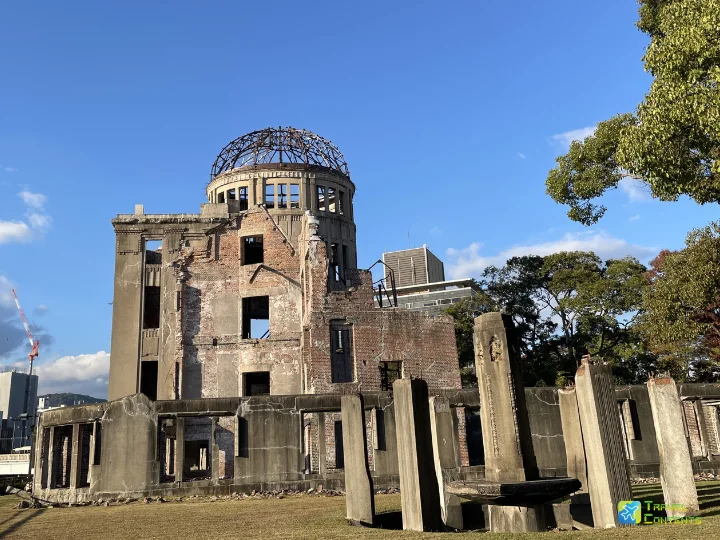
Located in the center of Hiroshima, the site was originally the Hiroshima Prefectural Industrial Promotion Hall. After the atomic bomb was dropped by the U.S. in 1945, the remaining walls and dome became what is now a World Heritage Site, symbolizing the importance of peace. Following the event, the Hiroshima Peace Memorial Park was established on the site, and every year on August 6, a peace memorial ceremony is held to honor the victims and pray for a world free of nuclear weapons.
- Transportation: Take the Hiroshima Electric Railway to Genbaku Dome-mae Station.
Spot 3|Orizuru Tower

Orizuru Tower is located to the east of the Hiroshima Peace Memorial and is a facility dedicated to the theme of peace. The Hiroshima Hill Observation Deck on the 13th floor offers panoramic views of the atomic bomb site and the city, creating a truly impressive scene. On the 12th floor, the Orizuru Square features a wall filled with paper cranes symbolizing peace. Visitors can add their own folded paper cranes to the wall, joining wishes from around the world and sharing a message of hope and peace.
- Transportation: Take the Hiroshima Electric Railway to Genbaku Dome-mae Station.
- Operating Time: 10:00~18:00(Last entry to the Observatory Deck is allowed up to 30 minutes before closing.)
Spot 4|Yamato Museum
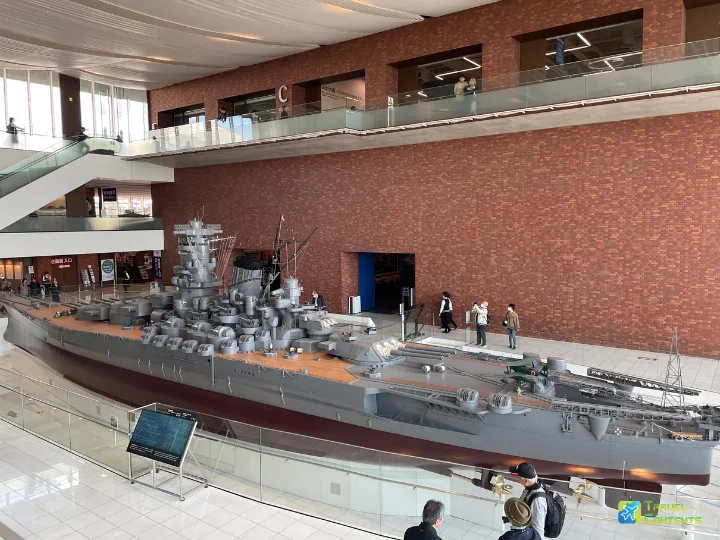
Kure City in Hiroshima Prefecture was once a major naval base in Japan, and the Yamato Museum, also known as the Kure Maritime History and Science Museum, showcases the history of Kure, the First Naval Armory, and shipbuilding technology. The museum features an impressive 26-meter-long model of the battleship Yamato, making it a spectacular sight.
Through its extensive models and exhibits, visitors can gain a deeper understanding of the significance of war and peace, making it a must-visit destination for history enthusiasts.
The Yamato Museum is temporarily closed for maintenance and will reopen around March 2026. In the meantime, the Yamato Museum Satellite offers a selection of exhibits as a substitute.
- Transportation:Yamato Museum: Take the JR Kure Line to JR Kure Station, then walk about 8 minutes to arrive.Yamato Museum Satellite: Ride the JR Kure Line to JR Kure Station, and it’s approximately a 5-minute walk to the site.
- Operating Time: Monthly schedules may differ, so please check the calendar announcements.
Spot 5|Shukkeien
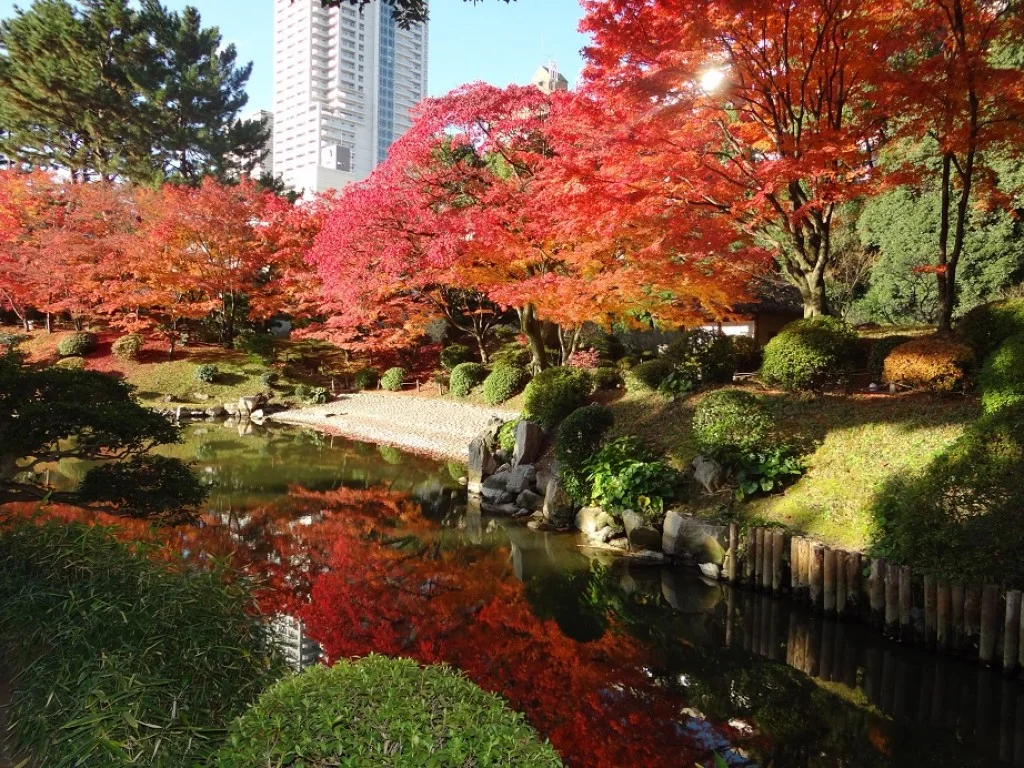
Image Source:Dive-Hiroshima
Shukkeien is a historic traditional Japanese garden and is recognized as one of the country’s national attractions. It was built in 1620 by Asano Naganao, the first lord of the Hiroshima Domain. Having undergone expansions, wars, and several renovations over the centuries, it has become a peaceful green oasis in the heart of Hiroshima City. With flowers, grass, and trees everywhere, the garden offers changing views across the four seasons. It feels like a hidden world where visitors can fully immerse themselves in the serene atmosphere of a traditional Japanese garden.
- Transportation: Take the Hiroshima Electric Railway to Shukkeien-mae Station.
- Operating Time:【3 / 16~9 / 15】9:00~18:00 【9 / 16~7 / 15】9:00~18:00(Last entry is allowed up to 30 minutes before closing.)
Closed Days:12 / 29~12 / 31
Spot 6|Hiroshima Castle

Hiroshima Castle, also known as “Carp Castle”, was built by the Sengoku-period daimyo Mōri Terumoto. The original wooden main keep was destroyed by the atomic bomb, and the structure seen today is a reconstruction. Inside the castle is a history museum showcasing Hiroshima’s samurai culture and the development of its castle grounds. The castle is surrounded by a moat and cherry blossom trees, attracting many visitors during spring. It is one of Hiroshima’s classic spots where history, culture, and natural beauty come together.
- Transportation: Take the Hiroshima Electric Railway to Shukkeien-mae Station, then walk about 7 minutes to reach the castle.
- Operating Time: Monthly schedules may differ, so please check the website.
Spot 7|Senkoji Temple

Image Source:Dive-Hiroshima
Senkoji Temple is located halfway up Mt. Taisho in Onomichi City, and visitors can easily reach it by cable car. From here, you can enjoy panoramic views of Onomichi Port and the entire city, and the temple is connected to the surrounding Senkoji Park. Every spring, about 1,500 cherry trees bloom in the nearby park, and a nighttime illumination event creates a dreamy and romantic atmosphere.
- Transportation: Take the JR Sanyo Main Line to Itozaki Station (toward Itozaki), transfer to a train toward Onomichi Station (direction of Okayama), and then take the city bus to Nagaeguchi Station.
- Operating Time: 9:00~17:00
Spot 8|Shimanami Cycling Road

Image Source:Japan National Tourism Organization
Connecting Onomichi City in Hiroshima Prefecture with Imabari City in Ehime Prefecture, the route spans approximately 75 kilometers and is one of Japan’s most famous cycling paths. Crossing multiple islands along the way, cyclists can enjoy stunning views of the Seto Inland Sea while exploring the unique charm of each area. The route is well-planned and offers cycling suggestions for different skill levels. For more information, please refer to the official website. This scenic and captivating route is a must-visit for cycling enthusiasts!
More Than Sightseeing! 4 Must-Experience Festivals in Hiroshima
👉Orchestra Festival-Lunar calendar: 6th month, 17th day (approximately July–August)
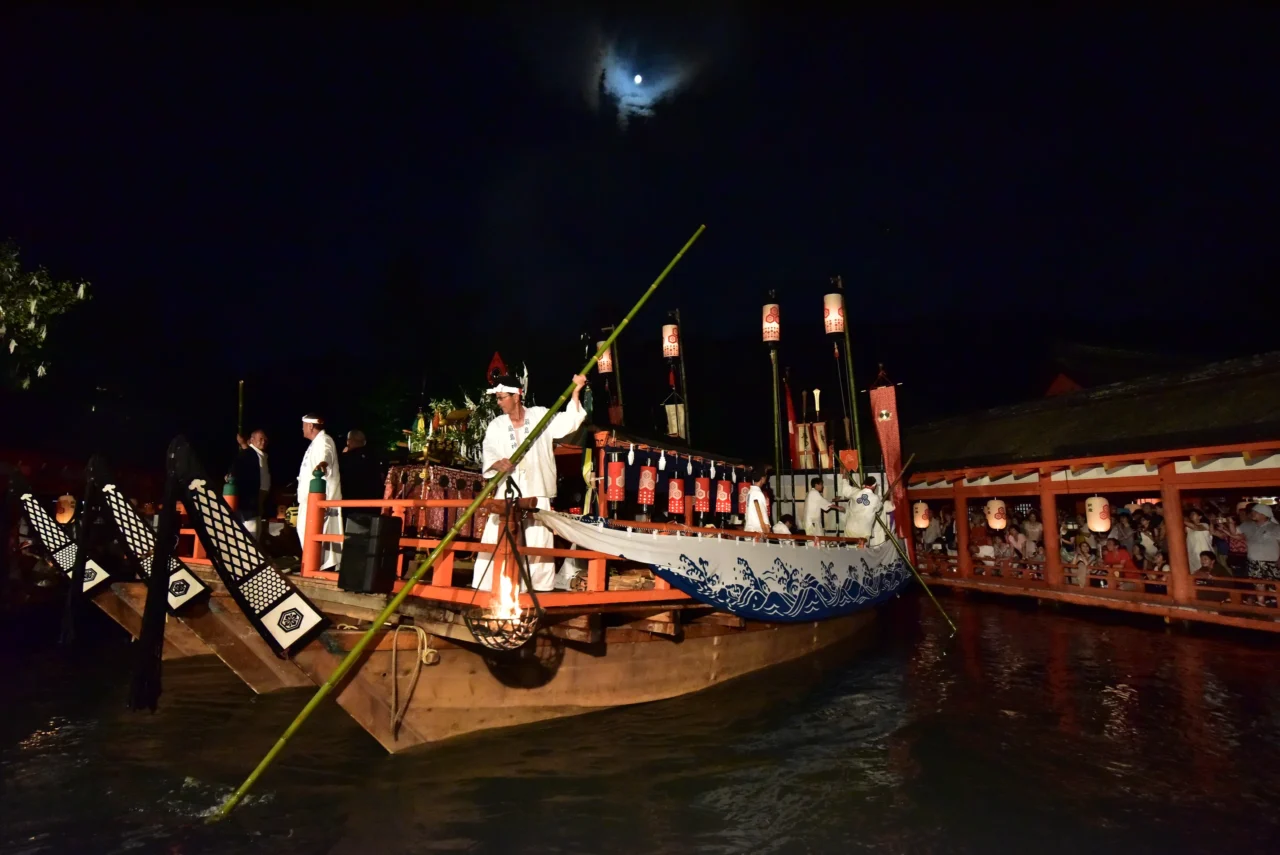
Image Source:一般社団法人 宮島観光協会 撮影:新谷孝一
The Orchestra Festival is one of the major boat festivals held by Itsukushima Shrine. On the 17th day of the 6th month in the lunar calendar, the enshrined deities are carried on a gosaisen (ceremonial boat), departing from the shrine to visit various subsidiary shrines before returning to the main shrine. During the journey, gagaku (traditional court music) is performed on board, and the combination of music and lanterns gently swaying on the water creates a truly enchanting scene.
As night falls, the flickering lights on the water combined with the soothing sounds of gagaku create a series of vivid, living scenes, while the floating torii appears especially mystical and solemn in the glow. This is not only a feast for the eyes and ears, but also a wonderful opportunity to experience traditional Japanese culture and spirituality firsthand!
👉Inari Festival- the First Friday to Sunday in June

Image Source:山陰山陽 Chugoku Region Tourism Guide
The Inari Festival has a history of over 400 years and is held to honor the Inari Daimyojin. Centered around Enryuji Temple, the festival fills the entire neighborhood with lively energy. Streets are lined with a variety of food and game stalls, and visitors can stroll around in yukata to fully experience this unique and vibrant festival!
👉Mihara Yassa Festival- the Second Friday to Sunday in August
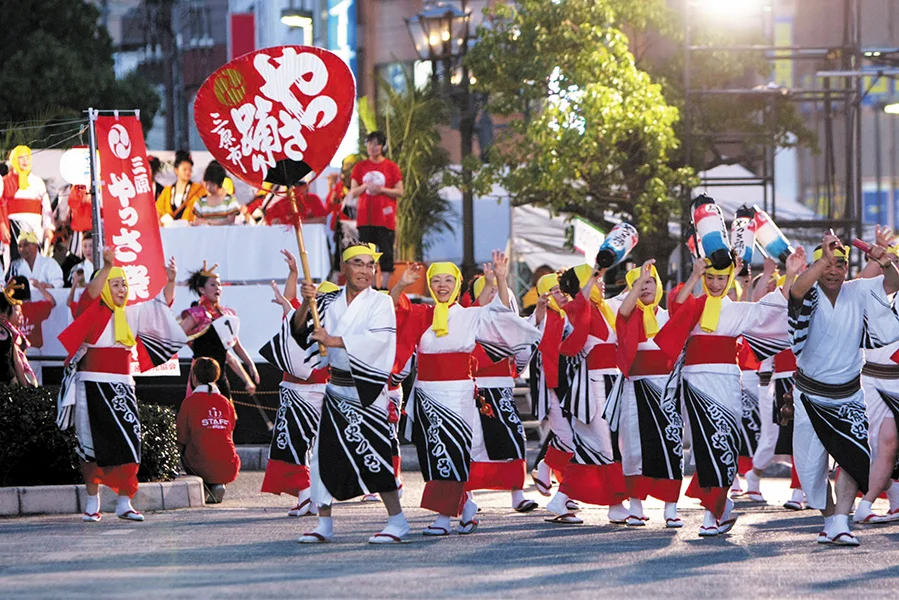
Image Source:三原観光navi
The Mihara Yassa Festival is best known for its thousands of dancers, who follow no fixed steps but move freely to the sounds of shamisen, taiko drums, and flutes, shouting “Yassa, Yassa!” together. The entire city is filled with excitement and joy! Over the two-day festival, more than 4,000 dancers participate, creating an incredibly lively atmosphere. On the final night, spectacular fireworks light up the sky, bringing the summer festival to a perfect close.
👉Ebisu Festival- November 18th to 20th
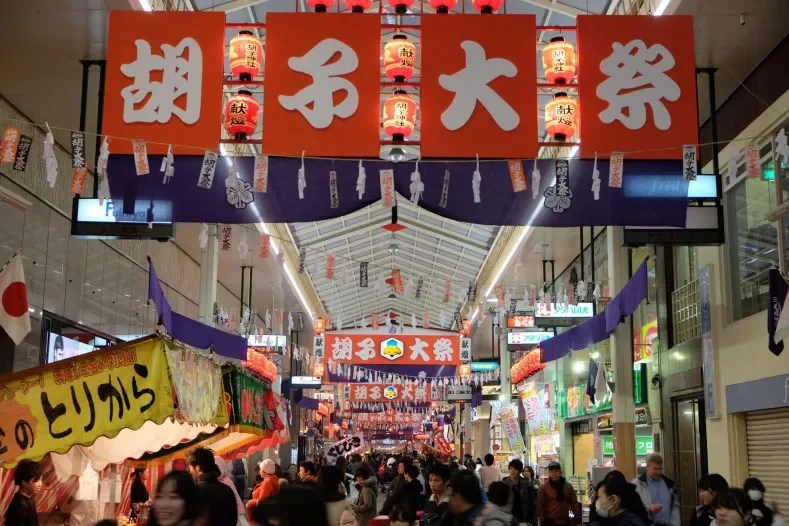
Image Source:Dive-Hiroshima
The Ebisu Festival is one of Hiroshima’s major autumn events, held annually to pray for prosperous business and local development. During the festival, Chuo Street becomes lively and bustling, lined with colorful flags and lanterns. Crowds fill the streets, enjoying grand parades, portable shrine processions, street markets, delicious food, and traditional performances.
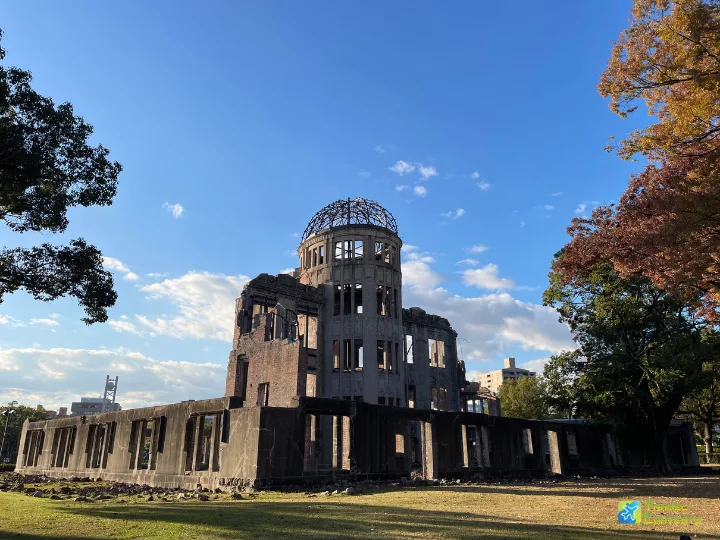
From Hiroshima’s rich historical heritage to its lively seasonal festivals, and from convenient transportation networks to the diverse charms of neighboring prefectures, this guide paints a complete picture for independent travelers. Whether you are drawn to the mystical torii of Miyajima, want to experience the vibrant atmosphere of the Hige Grand Festival, or plan to explore Sanyo, San’in, and even Kyushu using a JR Rail Pass, this article serves as a helpful companion for planning your trip. To make your journey even smoother and more enjoyable, don’t forget to consider using the Have Fun in Hiroshima Pass!
FAQ
Q: What are the must-visit attractions in Hiroshima?
A: For a first trip to Hiroshima, start with the Atomic Bomb Dome, Orizuru Tower, and Peace Memorial Park to understand the city’s history. If you enjoy architecture and gardens, visit Shukkeien Garden, Hiroshima Castle, and Itsukushima Shrine. For outdoor activities, try the Shimanami Kaido cycling route. If visiting nearby Onomichi, check out Senkoji Temple and Neko-no-Hosomichi (Cat Alley). Animal lovers can also add Okunoshima, known as Rabbit Island!
Q: What foods do you recommend?
For food, Hiroshima-style okonomiyaki, fresh oyster dishes, Setouchi lemons, hassaku oranges, Kure Navy curry, and fragrant conger eel rice are all must-tries.
Q: How do you get around Hiroshima? Any recommended transportation passes?
Getting around Hiroshima is easy. Besides buses, the Hiroshima Electric Railway (streetcar) is highly recommended, with routes covering popular spots like the Atomic Bomb Dome and Hondori Shopping Street. To reach Miyajima, you’ll need to take a ferry or high-speed boat. For city travel, the Have Fun in Hiroshima Pass is recommended. It includes attractions, experiences, and discounts, all redeemable simply by showing a QR code.
For intercity travel, the JR Rail Pass is recommended. Choose the regional type you need and easily visit Yamaguchi, Okayama, Hakata, or Kagawa.
Q: What special events or festivals are held in Hiroshima?
Hiroshima’s four representative festivals include the solemn Kangensai at Itsukushima Shrine in summer, the Inari Grand Festival in early June for good harvest and safety, the lively Mihara Yassa Festival in mid-August, and the unique Ebisu Festival held annually from November 18 to 20.


